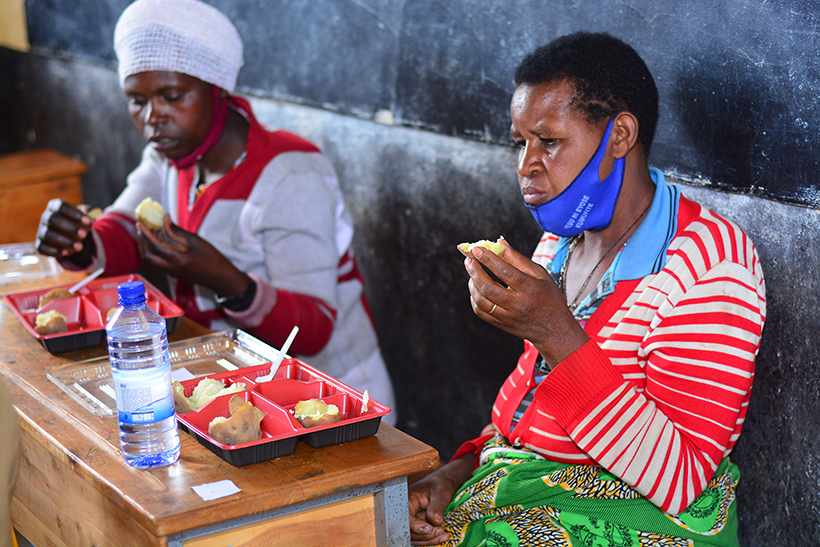
IITA and partners—the Rwanda Agriculture and Animal Resources Development Board (RAB), the International Potato Center (CIP), One Acre Fund (OAF), and the Alliance of Bioversity International and CIAT (the Alliance)—are implementing the triadic comparison of technology options (tricot) methodology to help farmers identify the most suitable crop varieties for the local conditions of their farm. This approach has been used since 2020 to identify novel varieties of potato and cassava preferred by farmers for release.
In November 2021, the tricot partners (IITA, RAB, CIP, OAF, and the Alliance) gathered in Rwanda to present and discuss the results from the two years of trials and plan potential next steps for trials and potential mainstreaming of tricot into RAB and OAF. Both RAB and OAF demonstrated interest in a stepped adoption of tricot as part of their variety selection activities.
OAF Agricultural Research Specialist Elyse Tuyishime commented, “We have been using the Randomized Complete Block Design (RCBD) approach in our field trials, which requires all participants to have the same varieties. Alternatively, the tricot approach uses an incomplete block design, allowing participants to use different varieties. Since working on this project, I have realized that this [tricot] approach is very efficient because a researcher does not conduct the trial; farmers lead the research by planting trials under their normal practices and conditions. Moreover, for the RCBD approach, a farmer is passive; therefore, the trials inform primarily a researcher, not a farmer.”
